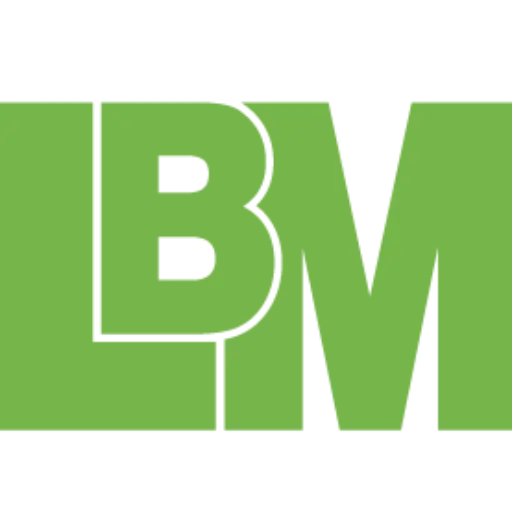- Mon - Fri: 8.30 AM - 5:00 PM
- 26565 Agoura Rd., 200, Calabasas, CA 91302
- 818-884-8075

What Is the Minimum Amount of Debt for Bankruptcy? | Filing Threshold Explained
What Is the Minimum Amount of Debt for Bankruptcy and Why It Matters
What is the minimum amount of debt for bankruptcy? Many people who are struggling with debt wonder the same thing when considering their options for financial relief.
It’s a common—and completely valid—question. If your bills are piling up, you may feel overwhelmed but also unsure if your situation is “serious enough” to get legal help. You might be thinking:
“I don’t owe that much… do I really need to file?”
“Will the court reject my case because my debt is too small?”
“Are there better options if my debt is under a certain amount?”
This article will answer all of those concerns in simple terms. We’ll walk you through what the law says, what bankruptcy courts actually look at, and how to know whether filing might be right for you—even if your total debt seems “low.”
Is There a Set Minimum Amount of Debt to File Bankruptcy?
The short answer is: No.
There is no official minimum debt amount required to file bankruptcy under U.S. law.
The Bankruptcy Code does not say, “You must owe at least $10,000” or any other number to qualify. Instead, the court looks at your overall financial situation, including your income, expenses, debts, and ability to repay.
That means you can file for bankruptcy even if you owe:
- $5,000 in credit card debt
- $8,000 in personal loans
- Or even less, if the debt is creating serious financial strain
So when people ask, “What is the minimum amount of debt for bankruptcy?” the answer is this:
There’s no magic number—it’s about need, not math.
Why People Ask About Minimum Debt
Most people don’t want to file bankruptcy. They often see it as a last resort. Because of that, they may second-guess themselves or feel guilty about considering it—especially if they think their debt is “too small.”
Here are some of the most common reasons people ask about minimum debt:
- “I only owe a few thousand dollars, but I can’t afford to pay it off.”
- “I don’t want to waste the court’s time if my case isn’t big enough.”
- “I was told bankruptcy is only for people who owe $30,000 or more.”
- “I feel embarrassed to file over credit card bills or medical debt.”
The truth is: bankruptcy laws exist to help people get a fresh start—not to judge how much they owe.
It’s not about the size of your debt. It’s about whether your debt is holding you back from living your life, providing for your family, or getting ahead financially.
When Bankruptcy Makes Sense—Even with Lower Debt
Let’s be clear: you don’t have to be buried under mountains of debt to file. In fact, many successful bankruptcy cases involve less than $15,000 in total debt.
Here are a few situations where filing bankruptcy can still make sense, even if the balance is lower than you’d expect:
You’re Living Paycheck to Paycheck
If your monthly payments are more than you can handle—and you’re falling behind every month—bankruptcy can stop the cycle and give you breathing room.
Debt Collectors Are Harassing You
Even a few unpaid accounts can lead to daily phone calls, threatening letters, and pressure from collection agencies.
You’re Being Sued
A lawsuit over a small credit card or medical debt can still lead to wage garnishment, bank levies, or judgments. Bankruptcy can stop that in its tracks.
You Can’t See a Way Out
If you’ve tried to negotiate or pay off debt over time—but the balance never goes down—filing may be the fastest way to reset.
You’re Under Emotional Stress
The pressure of unpaid bills affects your mental health, relationships, and work. That stress is a valid reason to seek relief.
What Courts Look At (Instead of Just the Amount)
When deciding whether to approve a bankruptcy case, courts care more about your income, expenses, and ability to pay than your total debt.
Here’s what matters:
- Are you behind on bills or credit card payments?
- Is your income too low to cover your basic living costs and minimum payments?
- Are you being pressured by creditors or facing legal action?
- Have you tried other options (like consolidation or counseling) without success?
If the answer is “yes” to any of these, your case will likely be viewed as legitimate—even if your total debt is under $10,000.
Chapter 7 Bankruptcy: What You Need to Qualify
Chapter 7 bankruptcy is the most common type for individuals. It’s often used to wipe out unsecured debts like credit cards, medical bills, personal loans, and utility balances. Learn more about how to file Chapter 7 bankruptcy.
There is no official dollar minimum to qualify for Chapter 7. What matters more is whether you pass the “means test” and show financial need.
What’s the Means Test?
The means test compares your income to the median income in your state for a household of your size. If your income is below the median, you usually qualify automatically.
If your income is above the median, the test looks at your allowed living expenses (like rent, food, and transportation) to determine whether you have enough disposable income to repay your debts. If not, you may still qualify.
The test can feel complicated—but bankruptcy lawyers use it every day and can help you quickly figure out where you stand.
When Chapter 7 Makes Sense (Even for Small Debt Amounts)
You don’t need $20,000 in debt to make Chapter 7 “worth it.” In fact, it may be helpful even if you owe just a few thousand dollars—especially if:
- You’ve fallen behind on multiple accounts
- You’re facing legal action or garnishment
- Your credit is already impacted
- You’re losing sleep over financial stress
- You have no realistic way to repay what you owe in the next 12–18 months
In many cases, the emotional and mental relief of wiping out your debt is more valuable than the debt total itself.
Chapter 13 Bankruptcy: Debt Limits and Structure
Chapter 13 bankruptcy is a little different. Instead of wiping out debt right away, you create a repayment plan based on your income. Visit how to file Chapter 13 bankruptcy for more info.
So, what is the minimum amount of debt for bankruptcy in Chapter 13?
Technically, there’s no minimum here either. But it’s important to know that there are maximum limits, updated every few years.
As of recent limits (always check for the most current), Chapter 13 debt caps are:
- Unsecured debt (like credit cards, medical bills): around $465,000
- Secured debt (like mortgages or car loans): around $1.4 million
When Chapter 13 Makes Sense for “Lower” Debts
Even if your debt totals are far below those limits, Chapter 13 may still be a good option—especially if:
- You have a steady income
- You’re trying to stop foreclosure and keep your home
- You’ve fallen behind on car or mortgage payments
- You’ve filed Chapter 7 in the last 8 years and don’t qualify again yet
- You want to repay debts on better terms, without interest or lawsuits
In Chapter 13, it’s not about how much debt you have—it’s about how manageable your current payments are and whether the court will approve your repayment plan.
Bankruptcy Isn’t Just About How Much You Owe
Let’s be honest: some people hesitate to file bankruptcy because they think their debt “isn’t high enough.” They feel like they haven’t suffered enough, or they’re ashamed of their situation.
But here’s the truth: bankruptcy isn’t just a numbers game. It’s about:
- The impact debt has on your life
- Whether you’re able to keep up with payments
- Whether you’re getting harassed or sued
- Your ability to build a better financial future
Whether you owe $4,000 or $40,000, if your debt is making it hard to function, plan, or breathe, it’s worth talking to a lawyer.
Filing isn’t about giving up—it’s about getting a second chance.
What to Think About Before Filing with “Smaller” Debt
Bankruptcy offers powerful protection, but it’s not free or instant. Here are some things to weigh before deciding to file—especially if your debt is on the lower end:
Costs of Filing
- Court filing fees (usually around $300+)
- Attorney fees (often $1,000–$2,500 depending on case complexity)
- Mandatory credit counseling courses (low cost but required)
Type of Debt You Have
- Bankruptcy won’t eliminate all debts (like child support, most taxes, or student loans)
- If your debt is mostly non-dischargeable, it might not be worth filing
Other Options Might Work
- Debt settlement or negotiation
- Working with a nonprofit credit counselor
- Creating a strict budget and payoff plan
- Waiting it out if a debt is about to fall off your credit report
Still, none of these options offer the legal protections that bankruptcy does—like stopping lawsuits, garnishments, or collection calls.
Bankruptcy Alternatives for Small Debts
If your debt is relatively low and manageable, bankruptcy might not be necessary. There are several alternative options to consider that can help you get back on track without going through the court system.
Debt Management Plans (DMPs)
Offered by nonprofit credit counseling agencies, DMPs help you combine unsecured debts into one monthly payment. These programs often reduce interest rates and stop late fees.
They usually last 3–5 years and may be a good fit if:
- You have mostly credit card debt
- You can afford to repay some of what you owe
- You want to avoid bankruptcy and protect your credit rating
Debt Settlement or Negotiation
If your debts are in collections or severely past due, you may be able to negotiate a lump-sum settlement for less than you owe. Be careful, though—this can negatively impact your credit and may have tax consequences.
Also, not all creditors are willing to settle, and some may still pursue legal action while you negotiate. If you go this route, consider working with a reputable debt settlement company or attorney.
Self-Payoff Strategy
If your total debt is under $5,000–$8,000 and you have some ability to pay, a self-directed strategy might work. This can include:
- Paying extra toward the highest-interest balance first (avalanche method)
- Starting with the smallest balance (snowball method)
- Cutting expenses and directing extra funds to your debt monthly
These options require discipline and a stable income—but for some, they’re enough.
Doing Nothing (Temporarily)
If you’re judgment-proof (meaning you have no wages to garnish, no assets, and live on exempt income like Social Security), some people choose to wait. Many debts fall off your credit report after 7 years. This isn’t ideal—but in limited situations, it can be a temporary path until your financial situation improves.
When Bankruptcy May Still Be the Best Option
Even with small balances, bankruptcy may still be the better path if:
- You’re being sued or your wages are at risk of being garnished
- You’re juggling multiple creditors and it’s taking a toll on your mental health
- You’ve already tried other methods with no success
- You want a clean break and a fast reset—especially with Chapter 7
To speak with a lawyer or explore your options, consider a free bankruptcy evaluation. For firms looking to connect with high-intent clients, Legal Brand Marketing offers exclusive bankruptcy lead generation solutions.
Bankruptcy Can Be the Right Option—Even with Smaller Debts
Still asking what is the minimum amount of debt for bankruptcy? The truth is, there is no fixed number. The real deciding factor is whether your debt is preventing you from meeting your basic needs, staying current on bills, or building a stable financial future. Even if your total balance is under $10,000, you may benefit from filing—especially if you’re facing lawsuits, garnishment, or collection pressure. Bankruptcy is not just about numbers; it’s about relief, protection, and the chance to start over with confidence.
Talk to a Bankruptcy Attorney About Small-Debt Filing Options
Wondering what is the minimum amount of debt for bankruptcy in your case? Legal Brand Marketing helps connect individuals with knowledgeable bankruptcy attorneys who can assess your debt, income, and financial goals. Whether you’re considering Chapter 7 or Chapter 13, our partners help you understand your options—even if your debt is below the typical threshold.
Take the first step toward financial peace of mind. Contact us today to explore if bankruptcy makes sense for your situation.
Frequently Asked Questions (FAQs)
1. What debts cannot be discharged in bankruptcy, regardless of the amount?
Certain debts like student loans, child support, alimony, and most tax obligations are typically not dischargeable—even if your total debt is low. Understanding what types of debt you carry is critical before filing.
2. Is it better to pursue debt settlement if I owe less than $10,000?
For small debts, settlement may be an option, especially if you can pay a lump sum. However, it won’t stop lawsuits or collections like bankruptcy can.
3. How does filing for bankruptcy affect your credit when debt is minimal?
Even if your debt is small, filing will appear on your credit report for up to 10 years. However, it may also help you rebuild faster than struggling with unpaid accounts long-term.
4. Can I file bankruptcy if I’m unemployed but have low debt?
Yes. If you have no income and your debt is creating financial hardship, you may still qualify for Chapter 7—regardless of the total amount owed.
5. What’s the risk of waiting to file until my debt increases?
Delaying bankruptcy may lead to lawsuits, wage garnishments, or damage to your credit. Filing early—even with lower debt—can prevent escalating consequences.
Key Takeaways
- There is no legal minimum amount of debt required to file for bankruptcy. Courts evaluate need—not a dollar threshold—when approving cases.
- Even small debts can justify filing if they cause financial stress or legal action. Bankruptcy is about relief, not the size of the balance.
- Chapter 7 is often a fast and effective solution for low-income filers with modest debt. Many people qualify based on the means test alone.
- Alternatives like debt management or settlement may be better for truly manageable debts. But they lack the legal protections of bankruptcy.
- Legal guidance can help you evaluate your best option based on total financial health—not just your debt total. An attorney can ensure you’re not overlooking risks or rights.



